Genetic Expression
1/30
There's no tags or description
Looks like no tags are added yet.
Name | Mastery | Learn | Test | Matching | Spaced |
|---|
No study sessions yet.
31 Terms

initiation
elongation
termination
What are the three stages of transcription
DNA is a double helix of two complementary strands
template strand → provides a template for ordering the sequence of complementary nucleotides in an RNA transcript
always the same strand for a given gene
non-template → aka coding strand; nucleotides are identical to mRNA sequence being produced for gene
What is the difference between the template and non-template strand?
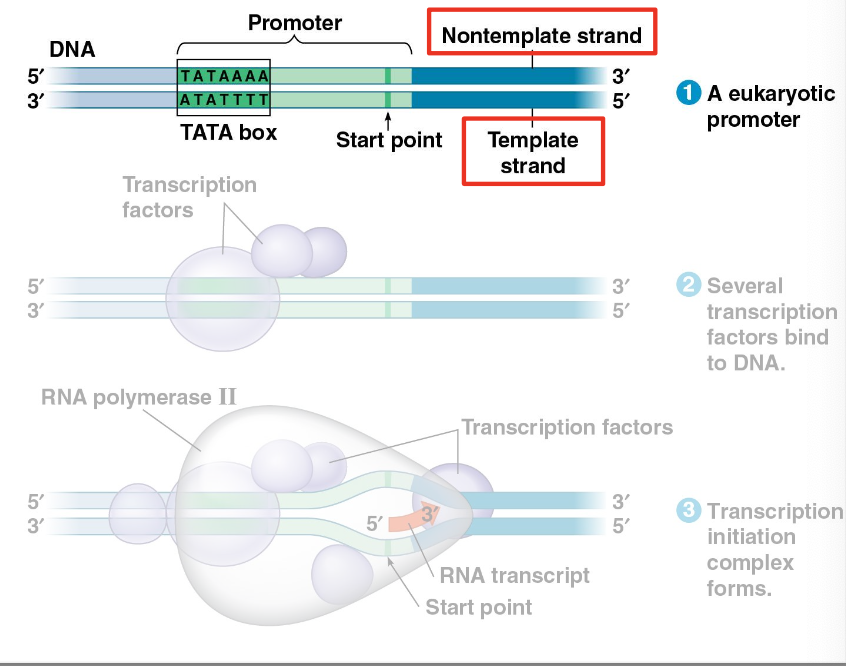
DNA regions that initiate the transcription of a gene
signal the transcription start point
usually extend several dozen nucleotide pairs upstream of the gene start point
eukaryotes have a promoter called a TATA box that is crucial in forming the initiation complex
What is a promoter?
transcription factors
proteins that help guide the binding of RNA polymerase
in proteins: structure = function
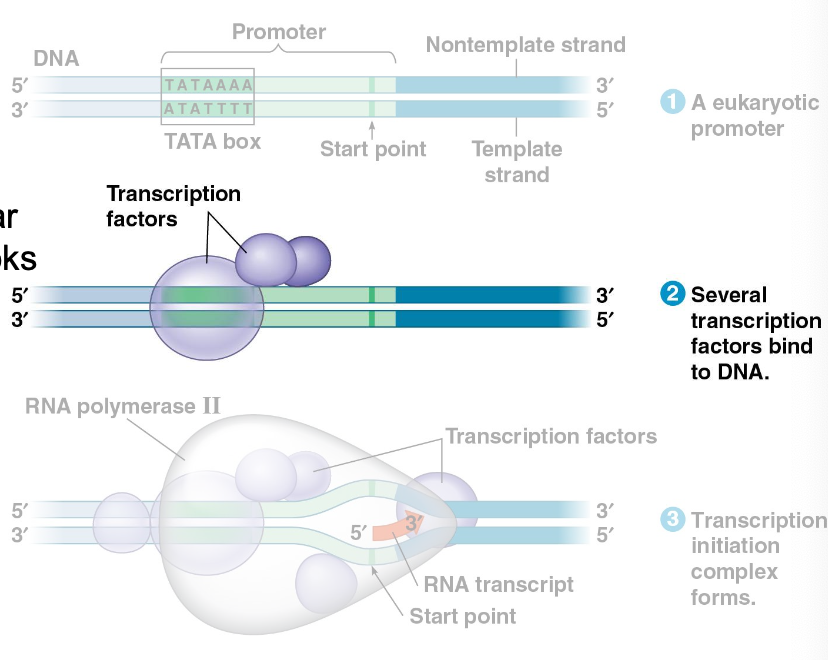
RNA polymerase
the final piece of the initiation puzzle
enzyme that catalyzes the synthesis of RNA from DNA template
specialized protein
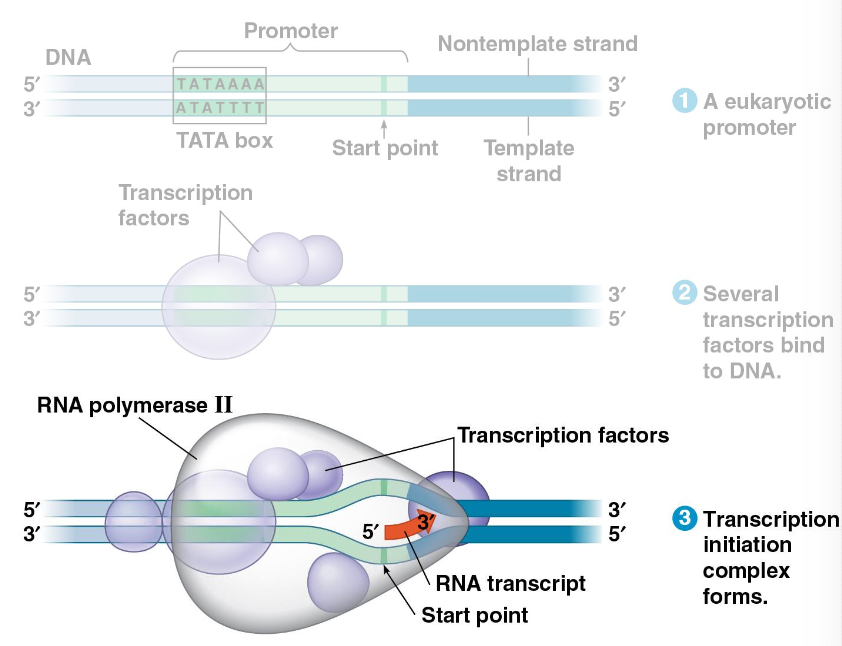
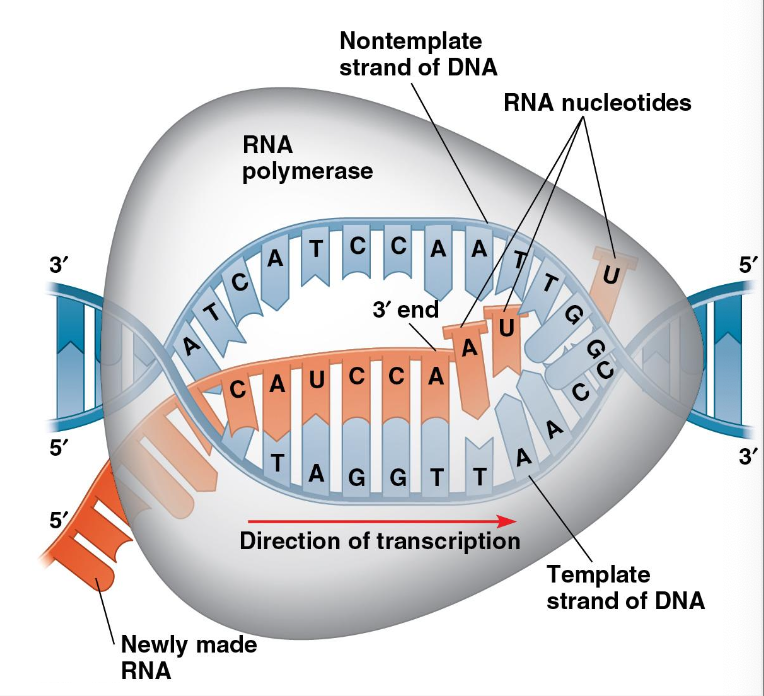
as RNA polymerase moves along the DNA, it untwists the double helix, 10-20 nucleotides at a time
template strand is read 3’ to 5’
RNA strand is built 5’ to 3’
nucleotides are added to the 3’ end of the growing RNA molecule
What is elongation?
They refer to the directionality of nucleic acid strands based on the carbon atoms in the sugar backbone. The 5' end has a phosphate group, and the 3' end has a hydroxyl (-OH) group.
What do 3' and 5' refer to in DNA/RNA?
DNA polymerase can only add nucleotides to the 3' end, so DNA synthesis always occurs in the 5' → 3' direction.
Why is the 3' and 5' direction important in DNA replication?
The leading strand is synthesized continuously in the 5' → 3' direction.
The lagging strand is synthesized discontinuously in Okazaki fragments.
How does directionality affect the leading and lagging strands in replication?
The transcribed RNA is identical to the coding strand, except thymine (T) is replaced with uracil (U) in RNA.
Is the RNA strand being transcribed exactly the same as the coding strand?
RNA strand is released from RNA polymerase
releases RNA polymerase from template
signaled by terminator regions on the template strand
e.g. polyadenylation signal in eukaryotes
ensures proper regulation of gene expression and prevents the production of unwanted transcripts (mRNA sequences)
What is the final step of RNA synthesis?
polyadenylation signal (PAS)
a sequence of nucleotides that marks the end of a messenger RNA (mRNA) molecule
RNA polymerase
enzyme which pries the DNA strands apart and joins together the RNA nucleotides
What is RNA synthesis catalyzed by?
complementary
read 3’ to 5’
RNA built is _____ to the DNA template strand.
uracil substitutes for thymine
What is the difference between RNA synthesis and DNA base-pairing rules?
sites for translation
use the info in DNA to make proteins
build proteins in two locations
cytosol
outside of ER or the nuclear envelope
made up of ribosomal proteins and ribosomal RNA
What are ribosomes?
codons into amino acids
nucleotide sequences of genes in DNA provide a code for constructing a protein
What do ribosomes translate?
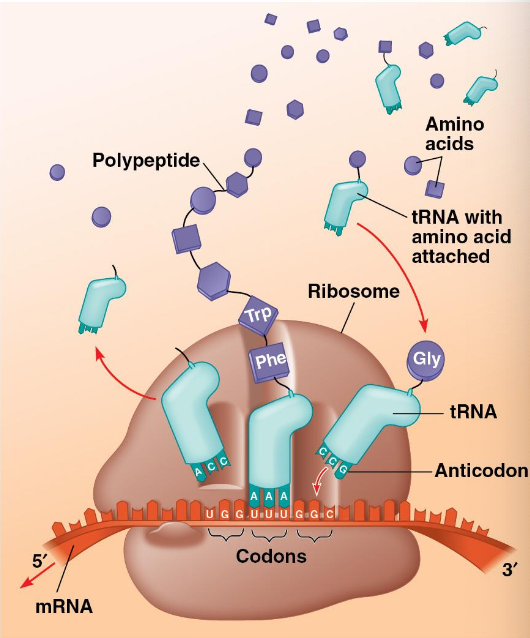
the conversion of the nucleic acid language to the polypeptide (protein) language
there is a change in language from the nucleotide sequence of the RNA to the amino acid sequence of the polypeptide
based on a triplet code: genetic instructions written as a series of three-base words called codons
What does translation require?
genetic code
the set of rules that dictate the amino acid translations of each of the mRNA nucleotide triplets
convert mRNA codons transcribed from a gene to the amino acid sequence of a polypeptide
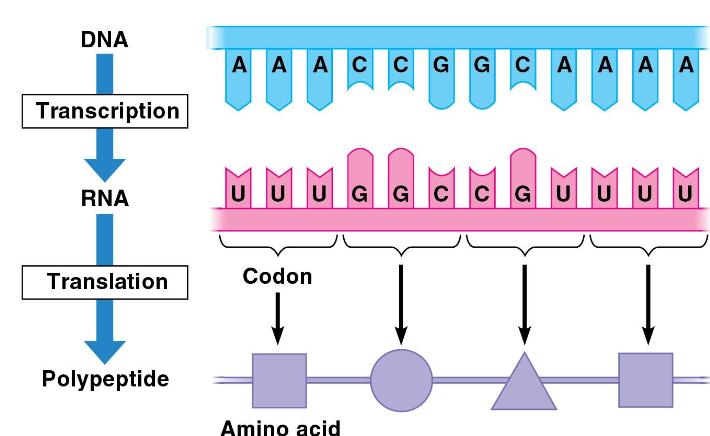

cytoplasm
a ribosome attaches to the mRNA and translates its message into a specific polypeptide, aided by transfer RNAs (tRNAs)
each tRNA is a folded molecule bearing a base triplet called an anticodon on one end and a specific amino acid attachment site at the other end
Where does translation take place? What happens?
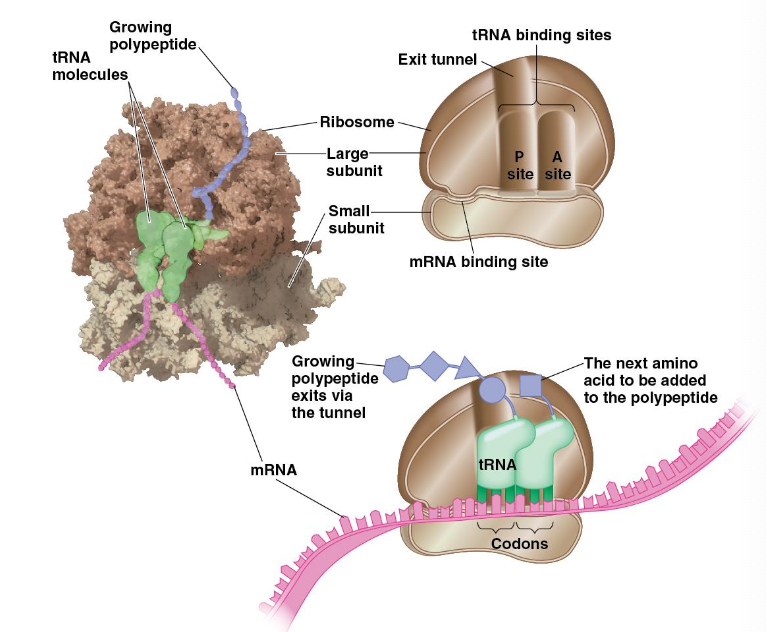
initiation
elongation
termination
What are the phases of transcription?

starts when the small ribosomal subunit binds with mRNA and a special initiator tRNA
the initiator tRNA carries the amino acid methionine
then the small subunit moves along the mRNA until it reaches the start codon (AUG)
How does the initiation of translation work?
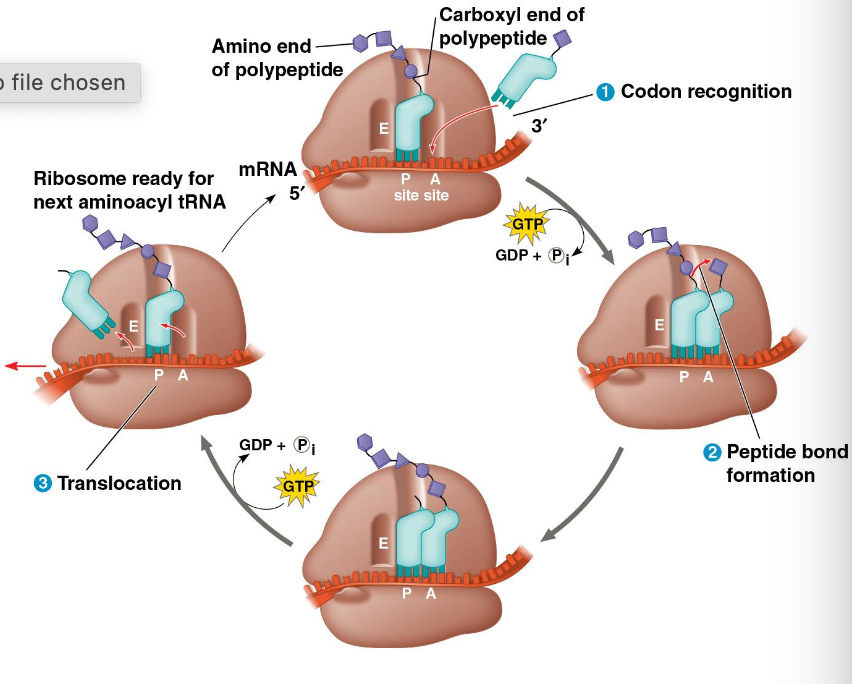
translation proceeds along the mRNA in a 5’ to 3’ → direction of mRNA
the ribosome and mRNA move relative to each other, codon by codon
a tRNA with. complementary anticodon pairs with each codon
adding its amino acid to the growing polypeptide chain
elongation continues until a stop codon reaches the ribosome’s A site
How does the elongation of translation work?

nucleotides in groups of threes
5’ → 3’
start codon methionine (MET) initiates translation
codon = AUG
three stop codons terminate translation
there are multiple codon options for several amino acids
How are codons read?
mutations
changes in the genetic information of a cell
point mutations
changes in just one nucleotide pair of a gene
nucleotide-pair substitution
replaces one nucleotide and its partner with another pair of nucleotides
missense mutations
still code for an amino acid, but a different amino acid
nonsense mutations
change an amino acid codon into a stop codon; most lead to a nonfunctional protein
silent mutations
have no effect on the amino acid produced by a codon because of redundancy in the genetic code (more than one codon for each amino acid)
reading frame
Codons must be read in the correct ____ (correct groupings) for the specified polypeptide to be produced